

Compact Muon Solenoid
LHC, CERN
| CMS-HIN-14-002 ; CERN-PH-EP-2014-212 | ||
| Long-range two-particle correlations of strange hadrons with charged particles in pPb and PbPb collisions at LHC energies | ||
| CMS Collaboration | ||
| 11 September 2014 | ||
| Phys. Lett. B 742 (2015) 200 | ||
| Abstract: Measurements of two-particle angular correlations between an identified strange hadron (${\rm K}^0_{\rm S}$ or $\Lambda$/$\overline{\Lambda}$) and a charged particle, emitted in pPb collisions, are presented over a wide range in pseudorapidity and full azimuth. The data, corresponding to an integrated luminosity of approximately 35 nb$^{-1}$, were collected at a nucleon-nucleon center-of-mass energy ($\sqrt{s_{NN}}$) of 5.02 TeV with the CMS detector at the LHC. The results are compared to semi-peripheral PbPb collision data at $\sqrt{s_{NN}}$ = 2.76 TeV, covering similar charged-particle multiplicities in the events. The observed azimuthal correlations at large relative pseudorapidity are used to extract the second-order ($v_2$) and third-order ($v_3$) anisotropy harmonics of ${\rm K}^0_{\rm S}$ and $\Lambda$/$\overline{\Lambda}$ particles. These quantities are studied as a function of the charged-particle multiplicity in the event and the transverse momentum of the particles. For high-multiplicity pPb events, a clear particle species dependence of $v_2$ and $v_3$ is observed. For $p_{\rm T}$ $<$ 2 GeV, the $v_2$ and $v_3$ values of ${\rm K}^0_{\rm S}$ particles are larger than those of $\Lambda$/$\overline{\Lambda}$ particles at the same $p_{\rm T}$. This splitting effect between two particle species is found to be stronger in pPb than in PbPb collisions in the same multiplicity range. When divided by the number of constituent quarks and compared at the same transverse kinetic energy per quark, both $v_2$ and $v_3$ for ${\rm K}^0_{\rm S}$ particles are observed to be consistent with those for $\Lambda$/$\overline{\Lambda}$ particles at the 10% level in pPb collisions. This consistency extends over a wide range of particle transverse kinetic energy and event multiplicities. | ||
| Links: e-print arXiv:1409.3392 [hep-ex] (PDF) ; CDS record ; inSPIRE record ; Public twiki page ; HepData record ; CADI line (restricted) ; | ||
| Figures | |
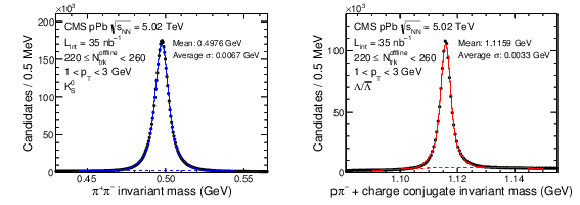
png pdf |
Figure 1:
|
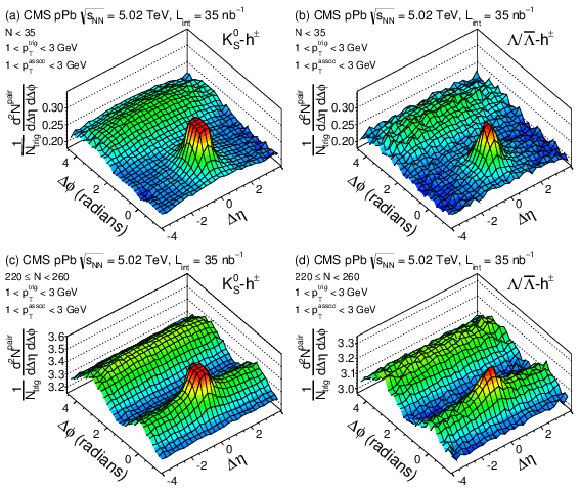
png pdf |
Figure 2:
|
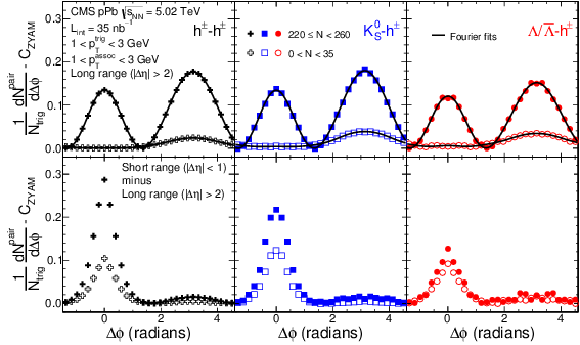
png pdf |
Figure 3:
|
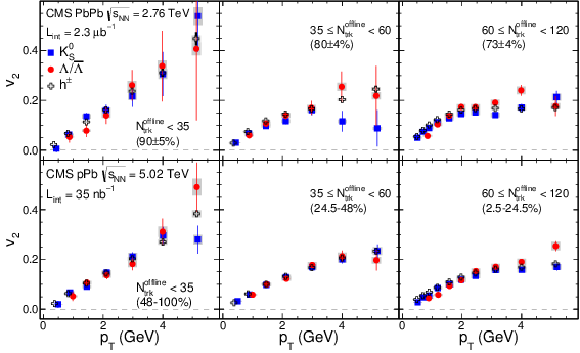
png pdf |
Figure 4:
|
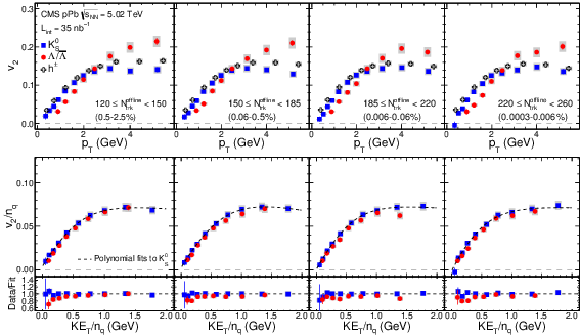
png pdf |
Figure 5:
|
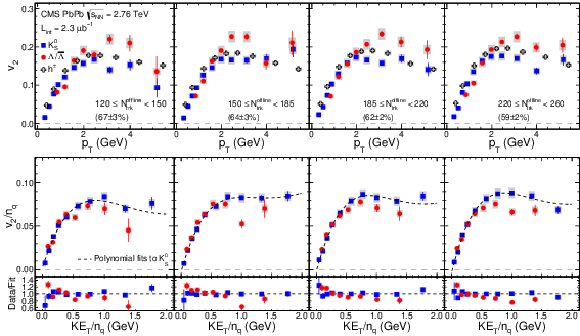
png pdf |
Figure 6:
|
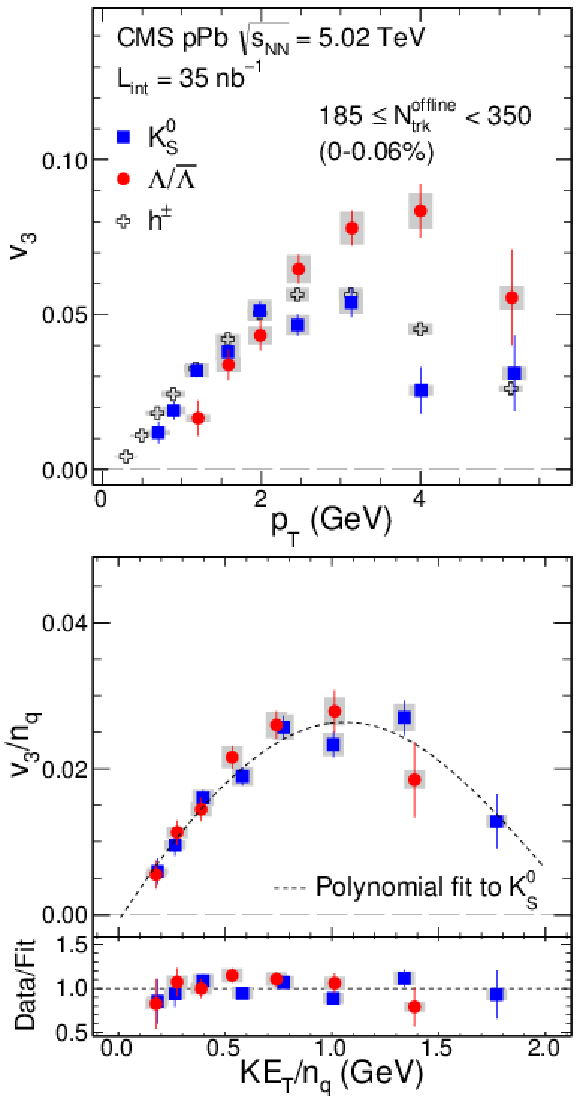
png pdf |
Figure 7-a:
|
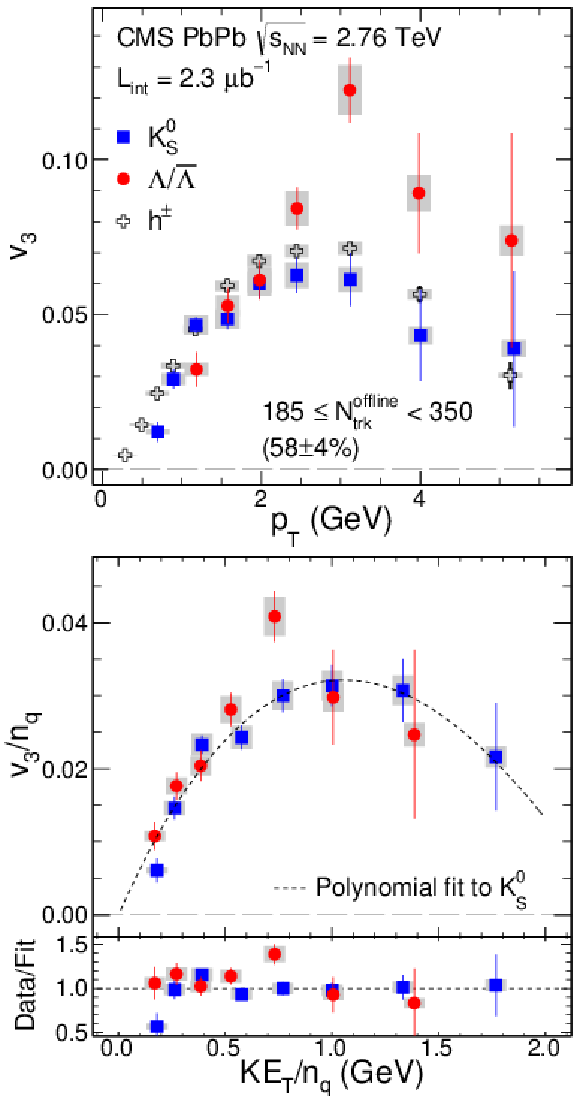
png pdf |
Figure 7-b:
|

|
Compact Muon Solenoid LHC, CERN |

|

|

|

|

|

|